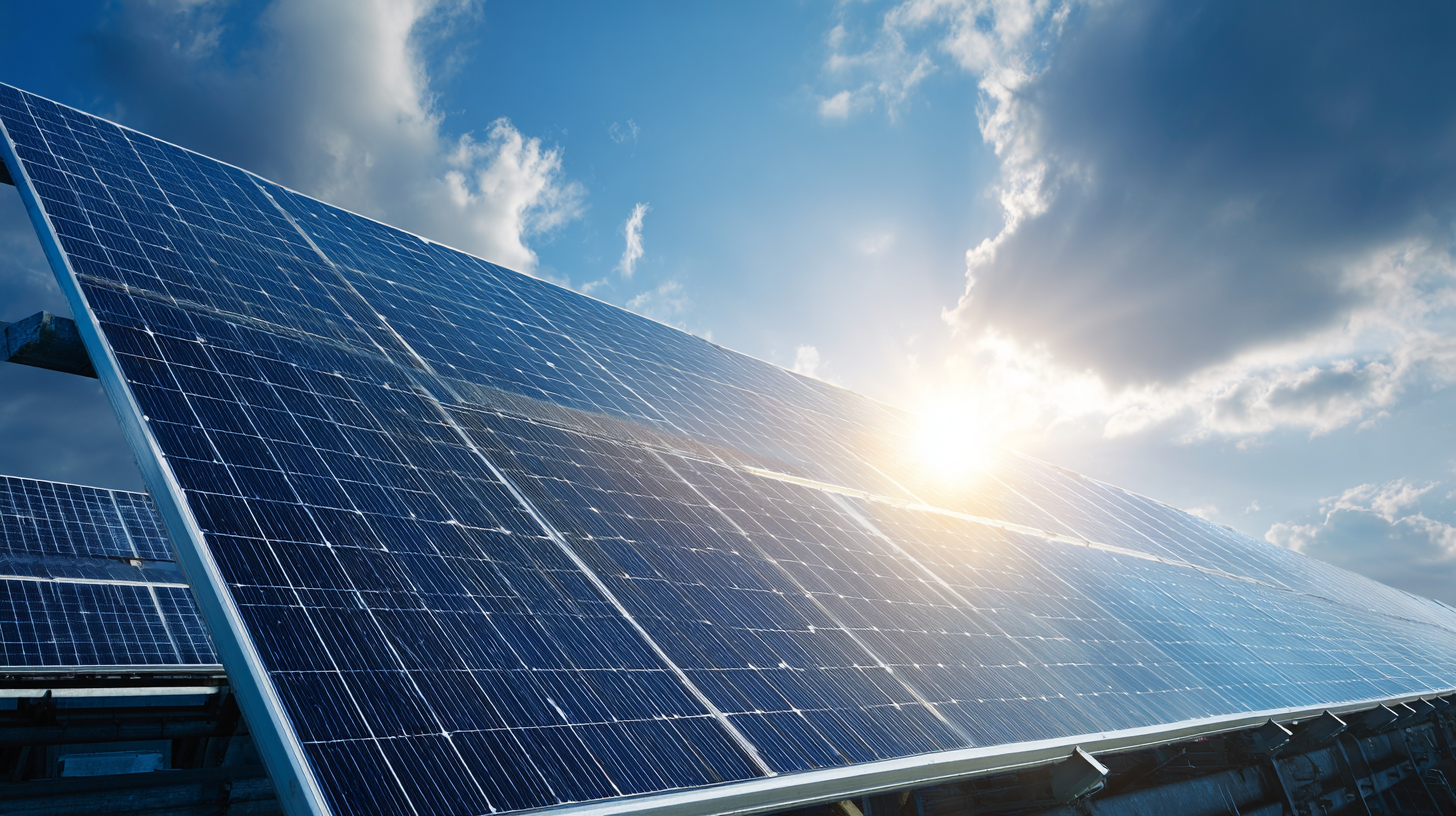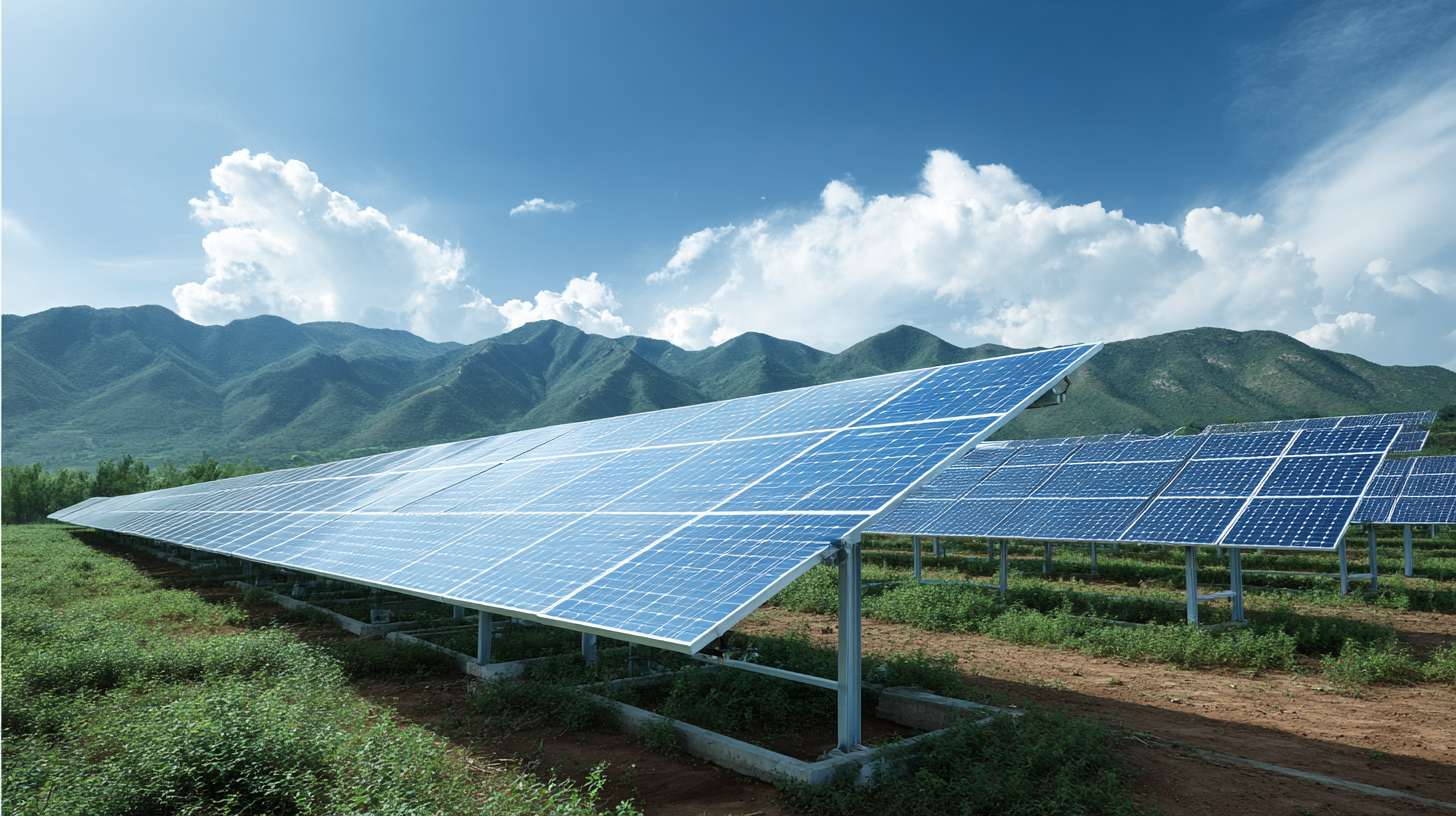ALL PRODUCTS
- Solar Panel
- Hybrid Inverter
- Lithium Battery
GSB SOLAR LITHIUM BATTERIES
- Gel Battery
- Solar Street Lights
- Pump Inverter
The global transition towards renewable energy sources has never been more urgent, with the International Energy Agency (IEA) projecting that solar power will become the dominant source of electricity generation by 2030. In this context, innovative solar panel system solutions offer immense potential to harness clean energy effectively and efficiently. According to a recent report by Bloomberg New Energy Finance, the cost of solar energy has dropped by nearly 90% since 2010, making it one of the most economically viable energy sources available. Additionally, a comprehensive analysis from the National Renewable Energy Laboratory indicates that solar panel systems could offset over 80% of global electricity demand by 2050. As industries and households increasingly adopt these technologies, understanding the transformative potential of cutting-edge solar panel systems is key to unlocking the full benefits of renewable energy and contributing to a sustainable future.

Renewable energy has become a crucial pillar in the ongoing fight against climate change, and understanding its fundamentals is essential for maximizing solar power efficiency. At its core, renewable energy refers to energy sourced from naturally replenishing resources such as sunlight, wind, and water. Solar power, specifically, captures sunlight using photovoltaic cells that convert light into electricity. The ability to efficiently harness this abundant resource depends on various factors, including the quality of solar panels, installation practices, and local weather conditions.
To measure the efficiency of solar power systems, several metrics come into play. One key metric is the conversion efficiency, which indicates how much solar energy can be converted into usable electricity. Modern solar panels boast conversion rates that range from 15% to over 22%. Additionally, performance ratio is another vital metric that assesses the actual energy output against the theoretical potential, considering factors such as shading, temperature, and system maintenance. By focusing on these metrics, individuals and businesses can better evaluate solar solutions that not only meet their energy needs but also contribute to a sustainable future.
The advancements in solar panel technology are rapidly transforming the renewable energy landscape, enhancing energy output and efficiency. According to a recent report by the International Energy Agency (IEA), global solar photovoltaic (PV) capacity reached 810 GW in 2020, a 22% increase from the previous year. Innovations such as bifacial solar panels and advanced tracking systems are contributing significantly to this growth, allowing for improved energy capture and conversion. Bifacial panels can generate up to 30% more energy compared to traditional panels by utilizing sunlight on both sides, offering a smarter investment for both residential and commercial applications.
Tips: When considering solar panel systems, look for products with a higher Efficiency Rating. Modern panels boast efficiencies exceeding 22%, maximizing energy harvest even in smaller spaces. Additionally, investing in smart inverters can optimize the performance of your solar energy system, allowing for real-time monitoring and adjustments based on environmental conditions.
As the market continues to evolve, features like integrated battery storage and enhanced durability are making solar solutions more appealing. Reports indicate that the global market for solar energy storage is projected to reach $18.9 billion by 2027, underlining the synergy between solar technology and battery systems. By incorporating these innovations, consumers can better harness solar energy potential, reduce reliance on fossil fuels, and move towards a more sustainable energy future.
| Innovation Type | Description | Efficiency (%) | Cost per Watt ($) | Expected Lifespan (Years) |
|---|---|---|---|---|
| Bifacial Solar Panels | Panels that capture sunlight from both sides | 22-24 | 0.80-1.00 | 30 |
| Thin-Film Solar Cells | Lightweight and flexible panels | 10-13 | 0.50-0.70 | 20 |
| PERC Technology | Passivated Emitter and Rear Cell technology | 20-23 | 0.70-0.90 | 25 |
| Integrating Storage Solutions | Solar systems combined with battery storage | N/A | 1.00-1.50 | 15 |
The recent news about the expected price drop of solar panels in Australia is significant for homeowners considering solar installations. However, while the reduction in retail cost suggests potential savings, some industry observers caution that the overall expense of installation may continue to rise. This highlights the importance of a comparative analysis between initial costs and long-term savings, as the upfront investment could be offset by substantial savings on energy bills over time.
Investing in quality solar panels is crucial for maximizing long-term benefits. With an average lifespan of around 25 years, choosing high-tier options can ensure that homeowners enjoy efficient energy production for decades. Furthermore, the efficiency of solar systems may degrade over time, with many panels losing effectiveness after six years. Thus, assessing the cost versus the projected long-term savings becomes vital for households looking to embrace renewable energy. Engaging in informed decision-making can ultimately unlock the full potential of solar technology while supporting sustainable living.
The shift towards renewable energy is not only a matter of environmental responsibility but also a financial opportunity for many homeowners and investors. By leveraging government incentives and tax credits, individuals can maximize their investment in solar energy. However, recent policy changes, such as significant cuts to green energy tax incentives in the U.S., have created uncertainty in the market. As the solar charge controller market continues to grow—projected to reach $2.828 billion by 2031—it remains crucial for potential investors to stay informed about the evolving landscape.

Tips: Consider exploring state and federal tax credits that are still available, as they can significantly reduce the overall cost of installing solar systems. Additionally, researching local utility incentives may uncover further savings opportunities. Engaging with knowledgeable solar experts can also provide insights into the best solar panel solutions for your needs while navigating potential challenges arising from policy shifts.
The residential solar photovoltaic market is expected to see substantial growth, influenced by supportive regulations and financial mechanisms. As government measures evolve, understanding these dynamics will be key in making informed investment decisions in renewable energy solutions. By staying proactive and informed, investors can harness the power of solar energy effectively, even amidst shifting political landscapes.
The Internet of Things (IoT) is transforming industries by creating a communication network in which objects and devices are interconnected, allowing for seamless data exchange and automation. When applied to solar energy systems, IoT enables real-time monitoring and management of energy production and consumption. Smart sensors can track sunlight exposure, panel performance, and energy demand, providing users with valuable insights that enhance efficiency and reduce costs.

Integrating IoT technology with solar panel systems empowers users to optimize their energy usage dynamically. For instance, homeowners can receive alerts via mobile applications about system performance and energy savings, while businesses can manage larger solar arrays through centralized dashboards. This level of interactivity and intelligence leads to smarter energy practices, enabling both residential and commercial users to harness maximum potential from their renewable energy investments. As IoT continues to evolve, it promises to make solar solutions even more accessible and effective in driving a sustainable energy future.






